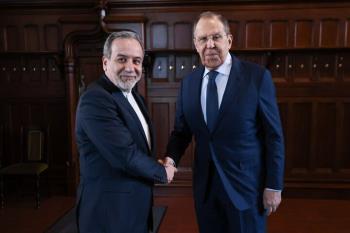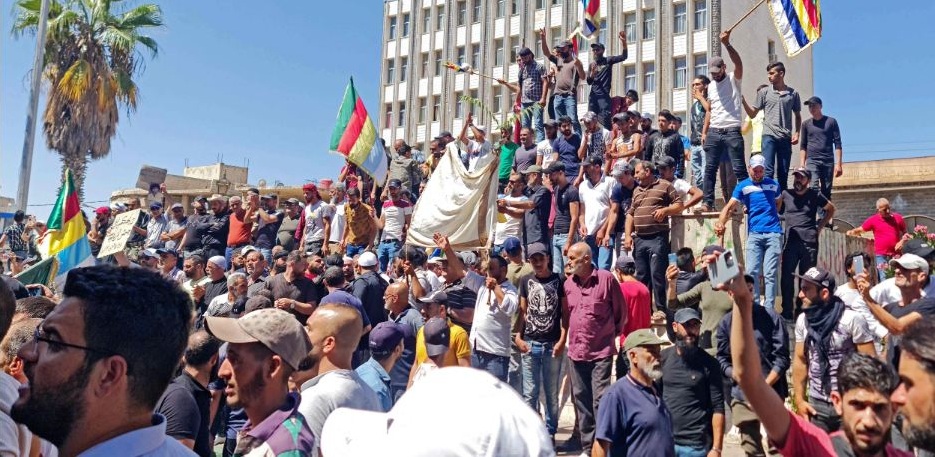Alwaght- Years after defeat of the terrorist groups and restoration of relative peace in Syria, hundreds of people in a rare demonstration protested high living costs and deteriorating economic conditions in Sweida province in south of the country. According to reports, some of shopkeepers and businesspeople have joined the protests with strikes and sit-ins. As a result government offices were shut down. Sweida, a bastion of the Druze minority and under control of the government, is suffering from biting economic conditions, something motivating protests in this province. The demonstration provided anti-Syrian media with feed to describe them as a sign the crisis in the country has not ended yet. Maintaining that the main spark of the Syrian crisis in 2011 started from Sweida and Daraa as the residents protest rising living costs, some media made speculations about a new round of tensions and crisis in the Arab country.
To discuss aspects of this important development, Alwaght talked to West Asia affairs expert Jaafar Ghanadbashi.
Alwaght: What are the main reasons for new protests in Sweida and Daraa in the current conditions? How big are they and are they likely to spread to other cities?
Ghanadbashi: The start of protests in Sweida has to do with a series of economic issues and other issues that in the past led to eruption of unrest in this city. In other words, both recent factors and past factors including the differences with the central government have inflamed these demonstrations. The Druze minority that has a small population in Sweida and accounts for only 3 percent of the population of the city has made some troubles. And foreign countries have fueled these religious minority’s protests.
The high cost of fuel and the devaluation of the Syrian lira and some economic problems caused by the renovation of the reconstruction of damaged infrastructure during the crisis and also the devastating earthquake have imposed a lot of financial pressures on the government, and this issue has allowed lesser attention to the living conditions of other regions, including Sweida. Also, Syrian oil and gas are stolen by the occupying Americans and the government does not have any income from these resources, and so it is difficult to meet fuel needs of people.
From another aspect, the power boost of terrorist groups in recent months has foisted new expenses on the government. So, the cause of the discontentment is economic, and also is partly ethno-religious. Foreign factors are involved, too, and actors seek their agenda behind this opportunity to reawaken the insecurity that encompassed the country over the past 12 years.
Given the current circumstances, the anti-Syrian movements are reactivating the violence with political causes. The existing groups are not openly involved and it is the Americans that are involved in these provocations. The Israelis also have hands, and since the West Bank has grown insecure, they are trying the same scenario in the pro-resistance countries to weaken them and force them off the circle.
Alwaght: Are foreign countries behind these protests? Are there links between protests and Syrian return to the Arab League? Because we know that the United States has strongly opposed this Arab decision
Ghanadbashi: The United States is trying to play an active role in fueling this unrest and is interested to see re-start of political protests throughout Syria, because any kind of insecurity can weaken the Syrian government, while the continuation of American movements in Syria and the continuation of Syrian oil and gas plunder by the Americans depends on the weakness of the Syrian government. Indeed, the general strategy of the United States in the region is to preserve the security of the Israeli regime, and one of the ways to achieve this goal is to weaken Syria.
Additionally, the Arab world inevitably accepted Syria back to the Arab League, something the United States is severely opposed to. The Americans are present near Tanaf and Sweida and are pushing to keep the Syrian borders with Iraq closed down and disallow these two members of the Axis of Resistance to unite their forces. Therefore, the eruption of the unrest in Sweida and Daraa is Washington-backed. Perhaps the anti-Damascus elements are hopeful about Western support as they know that any protests against Damascus will enjoy support of the Westerners and anti-Resistance camp enemies. Also, certainly there are some countries in the Arab world that supported terrorists in Syria over the past decade and now they are waiting for an opportunity to indirectly back government opposition.
The Israeli regime has a major role, too. It is afraid of a powerful Syria. As it launches attacks on Syria every now and then, it is watching for a political opportunity to make moves to undermine this country. What is going on in Sweida does not reflect popular demands. People have economic problems, but these protests are directed by foreign hands.
Alwaght: Are the recent protests so serious to inflame a new crisis similar to that of 2011?
Ghanadbashi: What we are seeing as civil protests cannot spread to other parts of the country like in 2011. This is because the people’s awareness has improved and they have the experience of the past 12 years and remember how they were abused by the Western countries and the terrorist organizations and were displaced from their homes. So, it can be said that the Sweida protests will fail to captivate public attention and recruit anti-government forces and so they cannot bring people to their side like in the past.
On the other hand, the government has reformed its intelligence and political structures, and with control of the situation and marking the weak and strong spots of the regions, it can guide the protests to a better direction. Off course, the United States interference in Syria and plunder of Syrian oil and occupation of parts of this country’s regions in association with Turkey have brought the Syrians to the conclusion that they should not side with these biased demonstrations.
The Israelis and Americans are trying to exaggerate these protests and pave the way for sinking Syria back into insecurity, but the conditions now are different from the past and it is difficult to spread the protests to the whole country.
Alwaght: What is the stance of the Syrian government and what has it done to ease the demonstrations?
Ghanadbashi: The Syrian government has tried in a variety of ways to deal with the demonstrations correctly. It has relatively managed the economic and fuel problems to steer clear of the issue spiraling into a crisis. But we should know that reconstruction still puts heavy financial burdens on the government. Syria does not have rich oil resources to help settle the challenges, but it has tried to deal with the economic problems using various ways including expansion of economic activities and attraction of investment.
Politically and in terms of security, the Syrian authorities have acted prudently. They have taken necessary steps by informing people of the plots of the enemies. The Syrian media have a heavy duty to enlighten people about the enemy schemes to make sure people will not again join the protests in Daraa and Sweida.
When Syria has dignity and pride, it can stand against the foreign enemies, and now there is such an atmosphere and if people come to this belief, they will ignore the American-provoked and backed protests in Sweida.
Alwaght: Some Sweida tribes have said that their protests are peaceful and they do not intend to destabilize the country and will not allow the foreign sides to compound the crisis. What does make these local tribes worried?
Ghanadbashi: Sweida tribes announced that their protests are peaceful because they are afraid of terrorists exploiting them. That is why they stress that they are peaceful. They know well that the Israeli regime, the United States and reactionary Arab states are bidding their time, waiting for an opportunity to deploy armed groups and this is a danger threatening people.
During the crisis, the tribes saw well how the terrorists shed blood in the name of religion and the so-called Sharia and displaced millions and devastated Syria. This bitter experience makes the tribes emphasize on the peaceful nature of their protests, but the enemy ignores this and struggles to exploit a state of tumult to bring back insecurity to Syria. Return of insecurity to Sweida not only distances people from their rights, but also easily destroys the relative security Syrian gained over the past years, not to mention the new problems it will create for people. So, the tribes try to avoid new tensions and not to step into political games abused by the enemies.



























